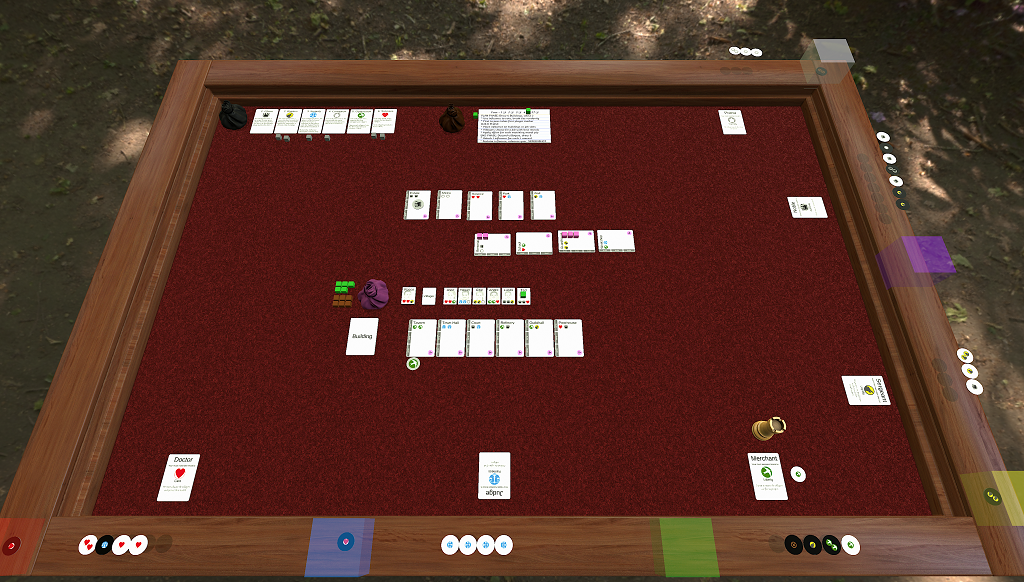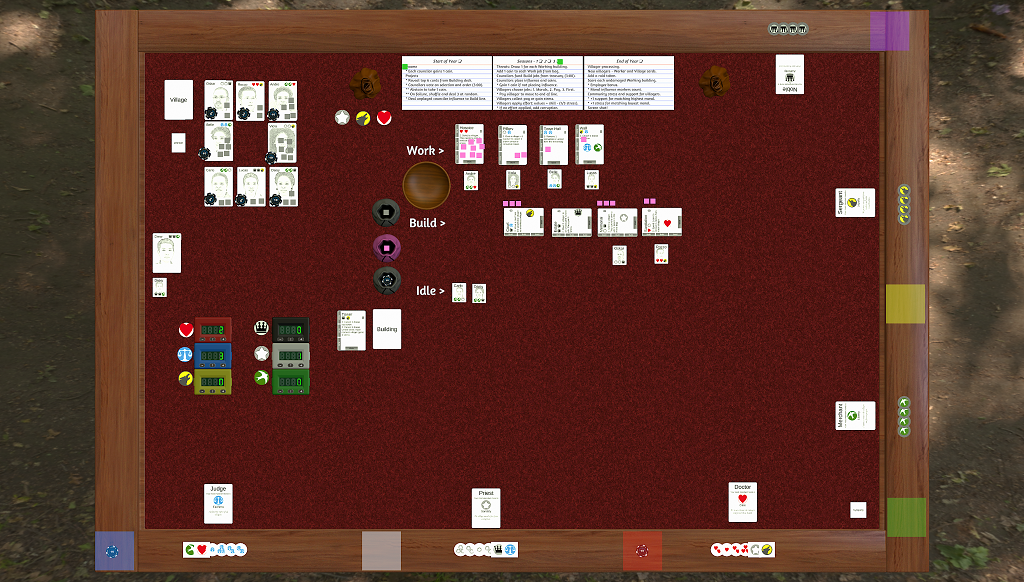By the time I’d reached year 5 of my solo 3-councilor game, I’d managed to build every building in the build row, and the threats were having virtually no impact. I know I’m playing more cooperatively than three individual players probably would, but that’s far too easy. Time to reassess the cost to build a building.
I dealt random some sets of 6 villagers and 3 buildings. For each set I took the influence from 3 councilors and tried to see how much I could accomplish with perfect cooperation. In other words: the councilors place their influence to maximize the villagers’ effort, even if it doesn’t help their own score. Getting 6 effort on the first building was pretty hard, even at the expense of effort to the other two buildings.

Getting 5 effort was certainly achievable, even to two buildings, but probably not to all three. Three is the minimum number of councilors, so a higher-count game would have more influence and potentially make it easier, but I suspect cooperation is actually harder with more players.
So I increased all the build costs to 5. I also made the Liberty and Care threats affect two villagers each, to give them more teeth should they come into play.



